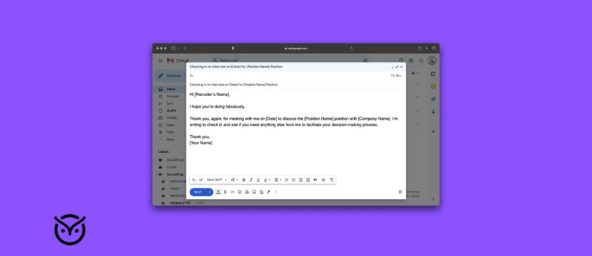
TL;DR
- Recruiters spend only 6–8 seconds on first-pass scans.
- That glance can’t judge skills, growth, or potential.
- Automated CV screening and AI CV keyword filtering speed up filtering.
- But machines need human review for balance.
- This blog shows why speed fails and how smarter methods work.
Imagine a recruiter sitting before a stack of 300 resumes. They glance at each one, deciding in moments whether it’s worth a closer read. That scenario captures the harsh reality: the average time a recruiter spends reviewing resumes is shockingly short. This first-pass glance often misses nuance, skill depth, or non-obvious potential.
But what if we could help recruiters be faster and smarter? In the following blog, you will learn how little time recruiters actually spend, why that’s a problem, and how innovations like automated CV screening and AI CV keyword filtering are reshaping resume screening. You’ll also see which practices help recruiters avoid costly mistakes.
How Much Time Do Recruiters Spend Reviewing Resumes?

Multiple studies converge on a startling truth: most resumes receive only a few seconds of initial attention. An eye-tracking study by TheLadders in 2018 found the average recruiter skimmed a resume for 6 seconds, though prior work pegged it closer to 4–5 minutes in self-reports. In the updated 2018 version, the average rose to 7.4 seconds.
Other sources say recruiters now spend 7–9 seconds in initial scans. Some surveys report that many hiring professionals admit to spending less than a minute per resume in the screening stage.
Interestingly, while first-pass time is extremely short, recruiters may dig deeper into resumes that show promise.
Because recruiters juggle dozens of openings and hundreds of applicants, the pressure is huge. As the Tufts Career Center notes, a recruiter may receive 300–500 resumes for a job, so fast scanning becomes a practical necessity.
How Much Time Do Recruiters Spend Reviewing Resumes? — Stopwatch Challenge
Q1. What role is the candidate in currently?
Q2. Which metric was mentioned for a product launch?
Q3. Which tool shows up in the skills?
Q4. What certification was listed?
Why Quick Resume Reviews Aren’t Enough

That 6– to 8-second window exposes serious risks:
Surface-level judgments dominate
In those seconds, a recruiter focuses on headers, dates, job titles, and formatting. The nuances, such as growth trends, transferable skills, and project details, often get overlooked.
Good candidates get discarded
Talented people may write resumes with less common titles, non-linear paths, or gaps (e.g., career switchers). A quick read might misjudge them as “not a fit.”
Bias and inconsistency creep in
Rapid judgments magnify biases (confirmation, anchoring, recency). A single heuristic (e.g., “this school name”) may dominate.
Volume overload weakens decision quality
As volume increases, exhaustion and overload set in. Manual screening over hundreds of resumes is tiring. Studies say manual screening is costly in time, risk, and decision fatigue.
Hidden signals are lost
Soft skills, project stories, growth, and culture fit require context and reflection. They rarely survive a six-second pass.
Because the average time a recruiter spends reviewing resumes is so small, many resumes that deserve further attention never make it past that first filter.
How AI and Automation Improve Resume Screening

When volume is crushing and time is limited, automating the first pass makes sense. Let’s see how automated CV screening and AI CV keyword filtering help:
AI systems scale speed with consistency
AI or algorithmic systems can screen thousands of resumes in minutes. That speed is impossible with purely human review.
These tools parse resumes, match against job-description keywords, discard mismatches, and rank candidates.
Smarter than keyword matching
Modern AI resume systems go beyond simple keywords. They assess context, career progression, gaps, and relational patterns.
But many systems still rely heavily on keyword matching (i.e., AI CV keyword filtering), especially in early stages. That means a well-crafted resume that skips a “required term” might get rejected automatically.
Reducing human bias (when used well)
Because AI treats each resume through the same rules, it removes random bias in many cases. Yet bias in training data or algorithms can leak through, so human oversight remains crucial.
Freeing up time
With the early elimination done by AI, recruiters can invest their energy in deeper screening, candidate experience, interviewing, and strategic hiring tasks.
Limitations to watch out for
- Keyword bombarding (over-optimization) can fool the system.
- Unique, non-standard experiences may get filtered out accidentally.
- Overreliance on AI means some candidates never see a human glance.
- Bias in model training or anonymization flaws can introduce unfair exclusions.
Automated CV screening and AI CV keyword filtering can dramatically lighten the front-end load, but they are complements, not replacements, to human judgment.
How AI and Automation Improve Resume Screening — AI vs Human Sorting Puzzle
Drag from here
AI Filtered
Great at speed + keywordsHuman Reviewed
Great at nuance + contextBest Practices for Recruiters to Improve Resume Review Accuracy

Even with automation, recruiters still hold the final responsibility for accuracy. Here are some actionable ways to strengthen resume review:
Combine automation with human context
Use automated CV screening for first-pass filtering, then add a thoughtful human layer. This balance prevents reliance on machines alone and makes sure candidates with unique paths are not unfairly excluded.
Slow down on the shortlist
Instead of rushing, invest more time in the top 10–15% of resumes. Look beyond job titles and scan achievements, career progress, and transferable skills. That deeper dive often uncovers the “hidden gems.”
Train against bias
Human decisions are still vulnerable to unconscious bias. Structured review checklists help recruiters avoid quick judgments based on names, schools, or employment gaps. A short review guide also ensures consistency across recruiters.
Use structured scoring
Scoring resumes against role-specific criteria rather than gut feel raises consistency. A simple rubric for skills, experienc,e and results helps recruiters compare candidates fairly.
Audit tools regularly
AI systems evolve. Recruiters should regularly audit their AI CV keyword filtering and scoring tools to make sure they are screening candidates fairly and not unintentionally filtering strong applications.
Prioritize candidate experience
Remember that a resume is the first touchpoint. Fast but sloppy processes reflect poorly on the company. Communicating timelines and giving timely updates boosts trust even if the candidate is not selected.
Benefits for Recruiters and Employers

When companies go beyond the bare minimum and invest in an accurate, balanced resume review, they unlock tangible benefits:
Better quality of hire
Recruiters spot candidates who aren’t obvious at first glance but bring creativity, adaptability, or cultural fit. This reduces turnover and strengthens long-term retention.
Stronger employer brand
Job seekers who feel their resumes are fairly considered, even if they aren’t selected, tend to walk away with a positive impression. This is critical in competitive industries where reputation matters.
Efficiency without sacrificing accuracy
By mixing manual screening with automation, teams save time yet avoid the pitfalls of overreliance on speed. Hiring managers see more relevant candidates, faster.
Reduced hiring costs
Mis-hires are expensive. Beyond wasted time, they drain team morale and slow down projects. A more accurate screening process helps recruiters avoid those setbacks and build stronger, more reliable teams.
Improved diversity outcomes
Short resume glances tend to favor “traditional” career paths. More accurate review surfaces candidates from different industries, non-linear backgrounds, or underrepresented groups. This creates stronger, more diverse teams.
Conclusion
The average time a recruiter spends reviewing resumes, which is just a few seconds, isn’t nearly enough to evaluate talent fairly. Quick scans risk overlooking strong candidates and repeating the cycle of poor hiring decisions.
The future of recruitment is a balance: automation for efficiency, human oversight for judgment. Recruiters who refine their process with structured best practices, smart tools, and deeper engagement will not just hire faster. They’ll hire better.




